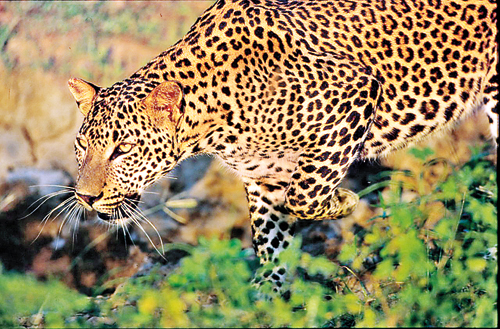The one that got away – Gehan de Silva Wijeyeratne
Gehan de Silva Wijeyeratne went on his first leopard safari when he was three. His parents bought him an SLR at age 15, and during his university years in London (Engineering, Imperial College) he joined The Camera Club in Leicester Square, and immersed himself in the world of practical photography magazines, monthly competitions and professional showcases.
Returning to Sri Lanka on the eve of the millennium, as director of Jetwing’s hotels and of their eco-tourism subsidiary, he found himself steadily drawn into writing and photographing his own journalistic contributions and creating illustrated field-guides to help develop the nature-travel industry. ‘In that sense I’m an accidental photographer.’
He has subsequently become one of the most vocal champions of Sri Lanka’s natural abundance, responsible for putting the island on the wildlife-tourism map for whale-watching, leopard-spotting and the annual elephant gathering at Minneriya. In fact, he argues Sri Lanka may well be the best all-round wildlife destination in the world.
The author of some 15 books and nearly 400 hundred articles (and all while holding down a day job), he now lives once again in London, where he is also involved in the British wildlife sphere as a trustee of several nature NGOs.
The one that got away
‘It was an unusual winter, and there was snow everywhere. I was walking home at dusk, near London Bridge, when I noticed a fox, about 10 feet up, on top of a wall.
Behind the wall was a building, and in it another man was also looking at the fox through his office window, his face illuminated by the light coming from indoors. The fox was lit up by the street lights and the last embers of the mid-winter sun glowing dimly along the horizon. The snow on the ground reflected both the lamps and the receding daylight, and with fox and person in the same frame it was as if all the elements had been arranged for a snowy urban wildlife picture. I stood there, mesmerised by the scene, and thinking it was just a perfect image for a competition entry.
I always have a compact digital camera in my daypack, good enough for a ‘record’ shot, but probably not good enough to take a competition-quality picture. If I’d had my SLR, I would have gone for it… But I also have the instincts of a naturalist, so there are times that I’m quite content just to observe. I haven’t lost my love for seeing great artistic images, but the two are sort of mutually exclusive. So I rarely submit for competitions now, because I’ve chosen to prioritise the field-guides and the educational angle – which in turn generate business and much-needed livelihoods: a sort of virtuous feedback loop.
In the end, I decided just to watch, rather than spoil the moment reaching for my camera. Eventually, the fox looked up at me, then slowly walked along the wall until it reached an intersection – and soon it was gone.’
The shot that he got
‘In 2001, I had become the first Sri Lankan to own a Canon 600mm f4 lens, part of my plans to brand Sri Lanka as a Big Game Safari destination (photo ‘shooting’ only!). There was a certain amount of industry scepticism about this, so I needed some iconic images to persuade tour operators that it was viable.
A young male leopard cub we knew as ‘GMC5’ had taken to coming every evening to the Koma Wewa in Yala Block 1. Kumar Sangakkara had also come down that weekend, and I had told him where to find the leopard – so at 5 p.m. a rather long line of vehicles had formed on the embankment of the wewa to see the young cub [and the leopard].
GMC5 was startled by a photographer re-positioning his vehicle, and started to move away. All of the other vehicles immediately scrambled to follow it; but Rukshan Jayewardene, who knows leopards and leopard-photography better than anyone, gestured to me to wait, and indicated where it would cross in front of us. I held my position and the cub emerged out of a thicket into the golden evening light. I had it for a few seconds, composed what I knew would be a dynamic image, and took my shot: the cub angled down, walking purposefully, with one leg raised, its stride frozen mid-motion.
At that time, I don’t think anyone had ever used a picture of a leopard in a Sri Lankan travel brochure, or a Lonely Planet-type book. But prints of this were sold in bookshops, and hung over the desks of tour operators like Kuoni. It’s been included countless times in newspapers, magazines and books and is probably one of the most published leopard images taken in Sri Lanka. It played a real role in creating the leopard safari industry in Sri Lanka, and helped to brand Sri Lanka as a Big Game Safari destination. I still don’t tire of looking at it.’

GMC5 at the ‘Kumar Wewa’. Pic by Gehan de Silva Wijeyeratne


